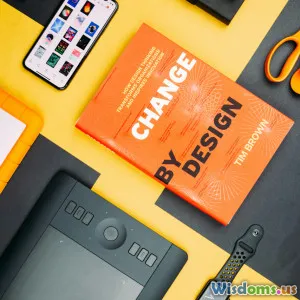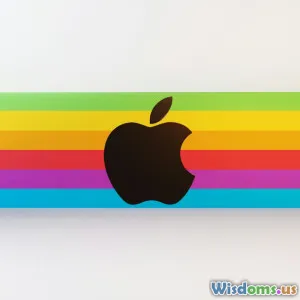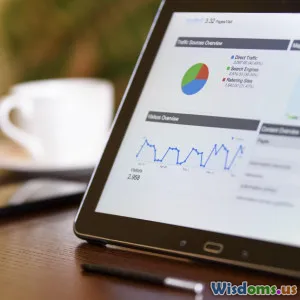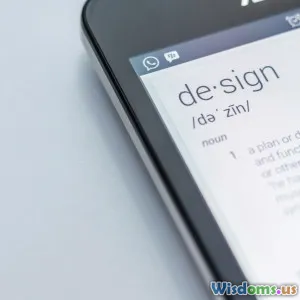Logo Concepts That Sell Turning Ideas Into Iconic Visuals
8 min read Discover how to transform creative ideas into iconic logos that truly sell your brand’s story and vision. (0 Reviews)Logo Concepts That Sell: Turning Ideas Into Iconic Visuals
Logos are the visual heartbeat of a brand, condensing identity, values, and promise into a single mark. But what separates a forgettable logo from an iconic one that truly sells? This article dives deep into the art and science behind creating logo concepts that resonate, engage, and generate real business impact.
Introduction
Imagine a simple golden arch that immediately makes you think of a Big Mac or the swoosh that embodies speed with no words needed. Such logos do more than identify a company—they sell a concept, a feeling, a lifestyle. In a world saturated with brands competing for attention, transforming abstract ideas into concise, engaging visuals is more critical than ever.
Drawing from real-world case studies and design psychology, we’ll explore how to craft and refine logos that don’t just represent but communicate values, foster loyalty, and ultimately drive sales.
Understanding What Makes a Logo Sell
Beyond Aesthetics: The Power of Meaning
A logo isn't just art—it’s a communication tool. Research by the Nielsen Norman Group emphasizes that users form first impressions within 50 milliseconds, demonstrating how quickly a logo’s effectiveness can pivot decision-making. The best-selling logos tell a story or evoke emotion instantly.
Example: The FedEx logo uses negative space to cleverly embed an arrow between the E and the x, symbolizing speed and precision, core brand values that customers trust for shipping.
Simplicity with Depth
Apple's logo — a clean, bitten apple — embodies simplicity infused with a layer of meaning. The bite differentiates it visually and metaphorically suggests knowledge, innovation, or discovery. Such layered simplicity makes logos easy to recall and versatile across media.
Research-Backed Insights: Shapes and Colors
Studies show that geometric shapes and color psychology heavily influence perception:
- Circles: Represent unity, wholesomeness, and community (e.g., Pepsi).
- Triangles: Imply stability or energy, depending on orientation (e.g., Adidas).
- Blue: Trust and professionalism—widely used in finance and tech logos.
- Red: Energetic, urgent, passion-driven — consider Coca-Cola’s bold red.
Understanding these subconscious cues helps icons sell not through explicit messaging but emotion and recognition.
From Idea to Icon: Steps to Creating Logos That Sell
1. Deeply Understand The Brand
Logos must embody the brand's essence. Before the sketchpad opens, designers immerse themselves in brand history, target market, competitive landscape, and mission. When Airbnb rebranded in 2014, its new 'Bélo' symbolized “belonging,” reflecting its business shift from home rentals to community creation.
2. Ideation and Conceptual Exploration
Brainstorming multiple logo concepts rooted in the brand narrative unleashes diverse creative possibilities. This phase benefits from mapping brand attributes to symbols and metaphors — transforming intangibles like 'trust' or 'adventure' into visual shorthand.
3. Sketching with Purpose
Even in the digital age, initial pencil sketches help focus raw ideas. Success stories abound:
- Starbucks’ iconic siren was first sketched as a complex mythological figure and refined over decades into a simple, enchanting image.
4. Refinement and Versatility Testing
A logo must shine everywhere—from giant billboards to smartphone icons. Designers adapt, tweak color palettes, and test scalability. Nike’s swoosh is celebrated for its minimalist form that maintains impact at any size.
5. Validation and Feedback
Consumer testing ensures the logo communicates intended messages. Studies also uncover unexpected interpretations requiring adjustment, making the logo culturally and demographically resonant.
Real-World Examples of Logo Concepts That Sell
Amazon
From the outset, Amazon wanted to represent a company with vast reach and customer focus. The smile-shaped arrow in the logo, stretching from A to Z, subtly tells customers 'everything from A to Z' is available along with a satisfying shopping experience.
McDonald’s
The Golden Arches are instantly recognizable globally. Originally designed as architectural arches in their restaurants, they evolved into a universally accepted symbol of fast food comfort. The choice of bright yellow was intentional to signal happiness and friendliness.
Tesla
The T-shaped logo resembles a stylized cross-section of an electric motor, directly connecting to Tesla’s innovation in electric cars. Such integration of product essence elevates the logo beyond a mere label.
Tips for Entrepreneurs and Designers
- Don’t chase trends: Iconic logos outlast fleeting graphic trends by focusing on core brand truths.
- Aim for memorability: A distinctive silhouette helps with instant recognition, crucial in overcrowded markets.
- Prioritize scalability: Your logo will appear in varied formats; design with adaptability in mind.
- Leverage symbolism: Use metaphorical imagery to deepen emotional connection without clutter.
Conclusion
Creating logos that sell is a thoughtful blend of creativity, strategic thinking, and psychological insight. Iconic logos universally share the quality of being simple yet profound — they tell a compelling story in an instant and evoke emotional resonance. Whether you’re a startup crafting your first logo or a designer guiding a global brand refresh, embedding meaning and clarity into your visuals will pave the way from concept to emblematic success. Remember, your logo is not just a picture; it’s your silent salesperson, building trust, recognition, and loyalty in an ever-noisy marketplace.
Start transforming your ideas into visuals that don’t just identify but truly sell.
References:
- Nielsen Norman Group: "How Users Read on the Web"
- Saul Bass: Legendary Logo Designer insights
- Interbrand’s Best Global Brands Report
- Color Psychology Research by Joe Hallock
- Case studies from branding agencies and company brand histories
Rate the Post
User Reviews
Other posts in Logo Design
Popular Posts


















